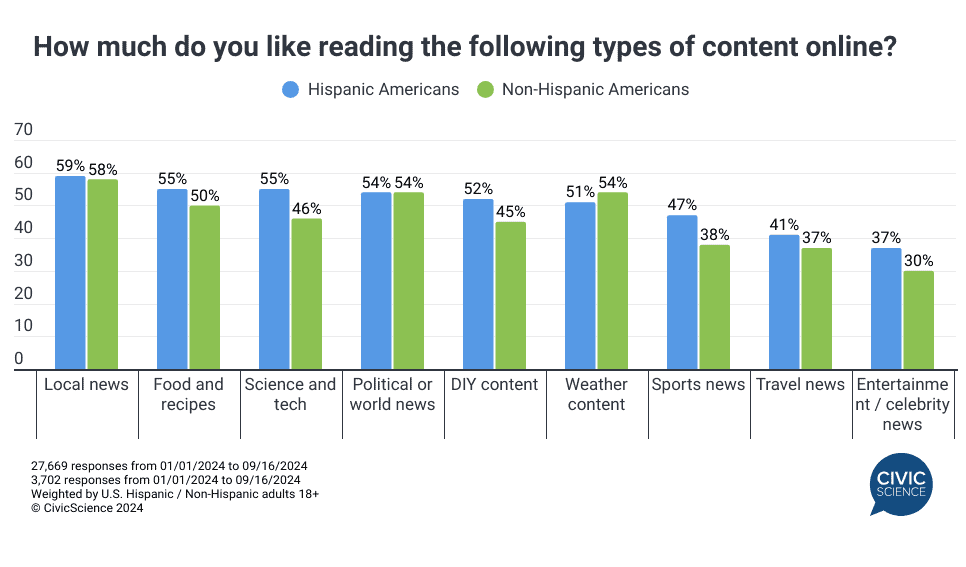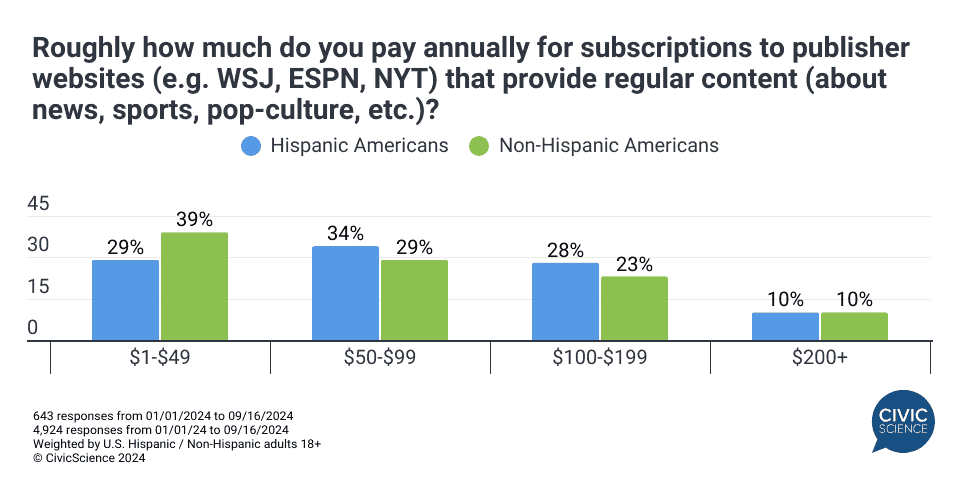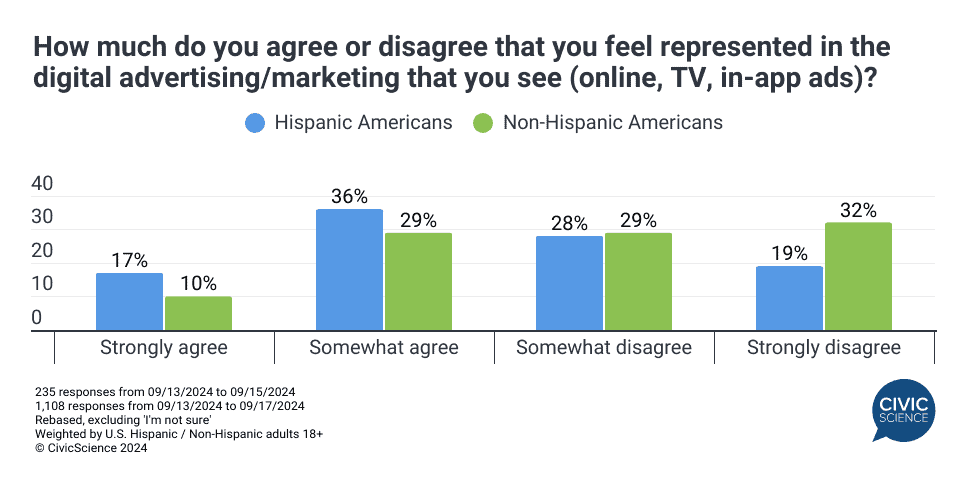This is just a sneak peek at the thousands of consumer insights available to CivicScience clients. Discover more data.
Today’s digital audience is a demanding one, with ever-changing interests and sentiments. Audiences from publisher to publisher can look drastically different.
With National Hispanic Heritage Month underway (September 15 to October 15), the interests and impact of Hispanic American consumers are front and center. How do Hispanic Americans differ from non-Hispanic Americans when it comes to news and content consumption, if at all?
Here are five key insights about how Hispanic American consumers engage with news and digital content online, from CivicScience’s database of more than 500K questions.
1. Time Spent Reading Digital Content
For starters, it’s worth noting that Hispanic Americans are slightly more likely than non-Hispanic Americans to spend a few minutes to more than an hour each day reading online or in-app content. Fifteen percent spend more than three hours daily, compared to 13% of non-Hispanic consumers.1
2. Top Categories of Interest
In terms of digital content, Hispanic Americans are more likely than non-Hispanic Americans to enjoy reading most types of content, including local news, entertainment/celebrity news, science and tech content, food and recipe content, sports news, and DIY content online. Non-Hispanic Americans only rank higher for reading political or world news and weather content.

Let Us Know: Do you enjoy following entertainment news about celebrity couples?
3. Paid Publisher Subscriptions
Currently, Hispanic Americans are much more likely than non-Hispanic Americans to say they subscribe to publisher websites, such as the New York Times or ESPN – 45% subscribe to at least one site, compared to 28% of non-Hispanic consumers. They’re also 10 points more likely to spend $50 to $199 annually for subscriptions on publisher websites.

Join the Conversation: Do you have a digital subscription to any publications?
4. Trust in News Sources
Hispanic Americans are more likely than non-Hispanic Americans to trust new sources overall. While 70% trust some form of news source, just 59% of non-Hispanic Americans say the same. Local news is the most trusted overall, followed by broadcast network news.2
5. Representation in Digital Advertising
The historic lack of representation of Latinx individuals in TV and film media prompts questions about how represented Hispanic Americans feel in advertising.
Surprisingly, the data show 53% of Hispanic Americans agree ‘somewhat’ or ‘strongly’ that they feel represented by the digital advertising they see online. That’s 14 percentage points higher than non-Hispanic Americans who feel the same (39%). In addition to the sense of representation, more than half of Hispanic Americans (58%) feel the digital ads they see are at least ‘somewhat’ relevant to their interests. Less than half of non-Hispanic Americans (43%) feel the same.

With so many Hispanic American consumers turning to publisher websites for their content fix, these outlets would be wise to concentrate on maintaining and expanding their reach with this demographic. After all, meeting the digital media needs of Hispanic Americans could have an impact that extends far beyond Hispanic Heritage Month.








